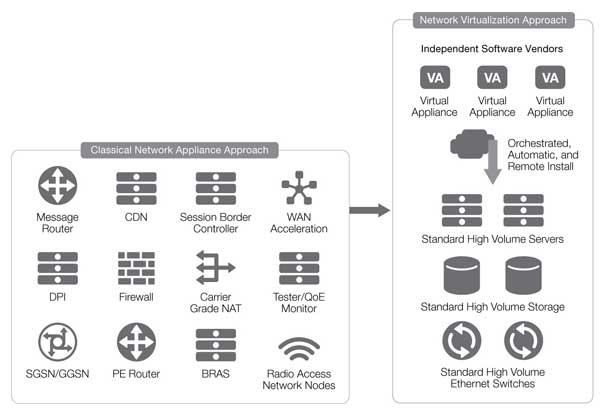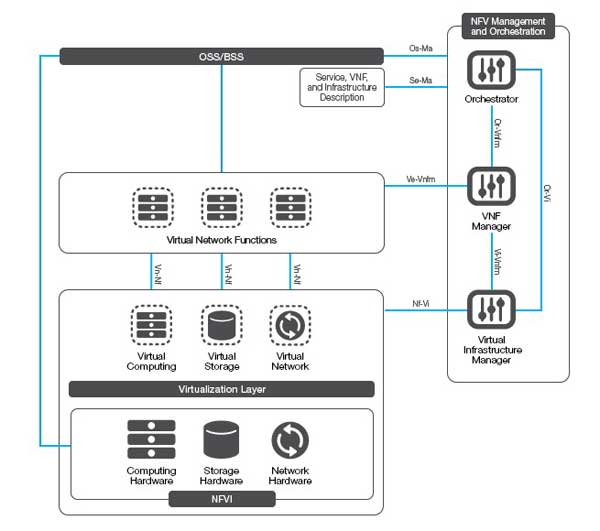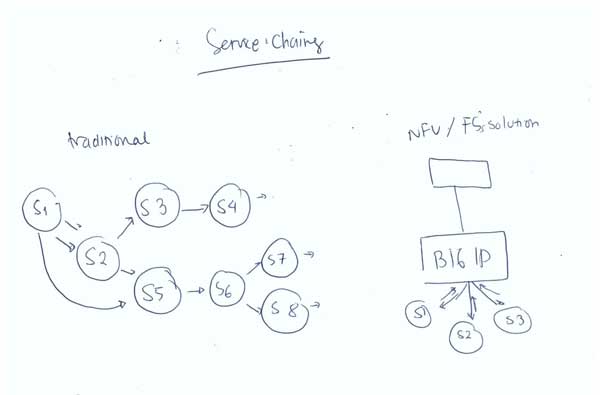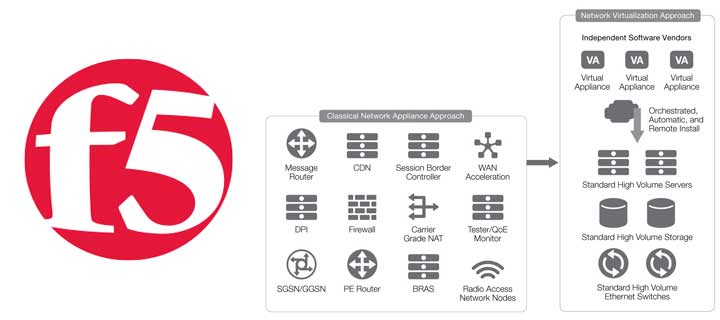F5 has observed that following numerous proof of concept trials in 2015 across the globe, 2016 will witness the tipping point of NFV (network functions virtualization) with carriers and Internet Services Providers (ISPs) now having gained solid trust in deploying NFV.
According to IDC, Asia Pacific is expected to be one of the key regions that will embrace the adoption of NFV in the years ahead. About two-thirds (64 percent) of service providers in the 14 markets across the region are at some stage in adopting NFV in their infrastructure.
The key drivers behind NFV initiatives are achieving elastic scaling of capacity, enabling the predictability of CapEx, and realizing rapid and flexible deployment of applications and services. In integrating legacy infrastructure with NFV and re-designing operation processes by adopting ETSI/NFV-ISG standards group guidelines, service providers are still facing challenges in orchestrating technologies for NFV. Unfortunately even though the ETSI/NFV-ISG standards group has published clear guidelines on Management and Orchestration, there is no one size-fits-all solution to determine the most efficient way in managing service chains. Despite the unification of orchestration in the NFV, there are several key considerations when it comes to achieving programmability in the NFV era.
Advancing NFV
Competition and rapid shift from offline to digital means service providers have to stay relevant, achieve operational efficiency and service agility, and most importantly, generate revenue in the new digital era.

Figure 1: NFV enables a better service delivery by leveraging COTS hardware and software delivered through the cloud
Service providers are quickly realizing that, while initial advantages and drivers towards virtualization were the reduction in CapEx and OpEx, the more compelling advantages today are focused on deploying a flexible, programmable, and agile network.
The perks of a hybrid environment
Service providers leverage NFV to explore opportunity to activate cloud infrastructure while keeping on-premise operations running seamlessly. Many, however, are still trapped within the legacy infrastructure. While servicing millions of customers with voice, data and multimedia services, operators are facing challenges integrating a new NFV-based virtualized infrastructure to the existing infrastructure.
Ensuring smooth integration between legacy networks and evolving NFV environments is an imperative. Purpose-built solutions may be better suited for the scalability of certain network functions like SSL, IPSec and video compression, as they have the capacity to handle large volumes of traffic and perform compute-intensive functions. The hybrid environment offers the most benefits in addressing the unique and changing demands of large service providers.
Speaking the same language
With on-premise and cloud based environments, embracing NFV has added complexity to business operations. In early 2012, conversations around NFV were about standardization and vendor support. This quickly evolved into working with multiple vendors such as OpenStack Neutron, Cisco APIC, VMware NSX and Microsoft HNV to support programmability in NFV and cost efficiency. Within two years, the trend has shifted from protocol support to the availability of REST APIs.

Figure 2: REST API orchestrates the complex environment, rounding out the full picture of NFV deliverable for operators (Link)
In a complex environment such as S/Gi networks, service providers are looking for a central point; this is where APIs come in to simplify the orchestration. REST APIs provide flexibility for IT to choose the most suitable solutions for their operation while ensuring high programmability.
An adaptive network infrastructure (ANI) orchestrates multiple VNFs and network elements through the collection of key real-time metrics, analysis of those metrics from multiple and disparate elements through advanced heuristic models, and adjustment of the network infrastructure to adapt to changing conditions based on operator-defined policies. It enables service providers to orchestrate and provision the services and enforce separation of duties to distribute tasks within the infrastructure.

Figure 3: Traditional Service Chaining VS Intelligent service chaining with F5
These intelligent traffic steering and service chaining will bring out the best in the service providers’ landscape, reducing the time to market while enabling them to use value added services (VAS) at a lower cost. VAS steering solutions such as parental controls, video optimization and security require intelligent dynamic service function chaining that understands both the application and subscriber context associated with the data traffic.
Achieving success in the NFV era
A virtualized infrastructure offers service providers the framework for a more scalable, reliable, and flexible architecture, but the virtualization of services and applications through the use of VNFs does not by itself deliver these benefits.
Application Delivery Controllers (ADC) are necessary for traffic scalability and reliability. The performance limitations of COTS hardware versus vendor-optimized hardware platforms also typically require service providers to combine the physical resources within a virtual pool through load balancing technologies, which also provide automated fault detection, high availability designs through active/standby models, and the flexibility to add and remove resources within the virtual pool without service disruption.
The critical factor to achieve success in the NFV environment is that service providers have to ensure the traffic is highly configurable and work in a consistent way. More importantly, service providers need to adopt solutions that bring all of these functions together to reside on a unified product platform with the right skill set to enhance the operation.
Liked this post? Follow SwirlingOverCoffee on Facebook.
About F5
Founded in 1996, with operations in 32 countries worldwide and DevCentral Community membership of over 140,000, F5 (NASDAQ: FFIV) helps organizations seamlessly scale cloud, data center, and software defined networking (SDN) deployments to successfully deliver applications to anyone, anywhere, at any time. F5 is “all about applications,” and is the recognized leader in Application Delivery Networking.


